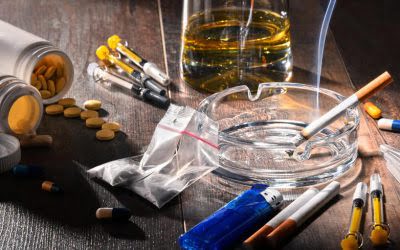In a large sample of over 19,000 participants, prevalence rates of AUD, PTSD, as well as comorbid AUD/PTSD were found to be significantly higher in AIAN participants as compared to NHW participants. The highest prevalence rates of lifetime PTSD were observed in AIAN women, and the highest rates of comorbid AUD/PTSD were observed in AIAN men. Both the Werner and Emerson papers suggest the need to develop more tailored and comprehensive assessment methods, and develop more effective interventions to help reduce the heavy burden of trauma, PTSD and AUD in racial and ethnic minority communities. A review of PTSD and alcohol abuse statistics indicate that nearly 28 percent of women diagnosed with PTSD report concerns about alcohol abuse and dependence.

Masking the symptoms of post traumatic stress disorder only hides it from the surface, allowing it to become deeper-rooted, causing the PTSD symptoms to worsen. This cycle can quickly lead to substance use disorder, drug addiction, or alcohol addiction. Furthermore, patients with PTSD and substance use disorders tend to suffer from more severe PTSD symptoms, particularly those in the avoidance and arousal symptom clusters, than do patients with PTSD alone (10). Conversely, one longitudinal study of patients with PTSD and a comorbid substance use disorder found at 6-month posttreatment follow-up that patients whose PTSD symptoms had remitted reported significantly less substance use than did patients with unremitted PTSD (11). In the next section, two studies focus on the prevalence and correlates of AUD and PTSD in racial and ethnic minority communities.
What is PTSD?
It must be emphasized that many other neurobiological systems are involved in both the acute and chronic adaptation to stress and to substance use. These systems include the dopaminergic, γ-aminobutyric acid, benzodiazepine, and serotonergic systems, as well as the thyroid axis. Interactions among these systems in patients with comorbid PTSD and substance dependence are enormously complex. Thus, the potential relationships we discuss between the HPA axis, the noradrenergic system, and symptoms in patients with comorbid PTSD and substance use disorders should be viewed as one part of a far more complex whole.
- Other research has linked emotion dysregulation to alcohol-related consequences (Dvorak et al., 2014; Magar, Phillips, & Hosie, 2008).
- Once the drugs wear off and you sober up, your PTSD symptoms will come back stronger than ever, leading to a quickly escalating cycle of substance abuse, especially once physical addiction takes hold.
- Participants were provided with a Samsung Galaxy Player 5.0 loaded with the Android momentary assessment software (Simons & Gropel, 2012).
- These findings differ from Gratz and Roemer’s (2004) study that found that men scored higher on only Lack of Emotional Awareness and also another previous study that found that adolescent females scored higher on four of six emotion dysregulation dimensions (Neumann et al., 2010).
- However, because traumatic experiences that can lead to the development of PTSD include events such as natural disasters, car accidents, and witnessing a loved one experience trauma, men are just as vulnerable as women to unexpected forms of environmental trauma.
Whether the comorbidity between PTSD and AUD accompanies a neuroimmune profile that is predominantly proinflammatory in nature, and whether the added morbidity represents an aggravated proinflammatory state, remains unknown. Furthermore, it is unclear whether the correlates of comorbid PTSD in AUD are uniform across different countries and ethnicities. Tryptophan degradation along the kynurenine pathway by causing the release of neurotoxic metabolites is reported to be increased in stress-related psychiatric disorders [28].
Trauma and PTSD Can Lead to Problems with Alcohol
Hence, both PTSS symptoms and alcohol may be expected to result in momentary shifts in disinhibited behavior (e.g., interpersonal conflict). In this regard, disinhibition and related constructs moderate within-person associations between drinking and alcohol-related problems (Neal & Carey, 2007; ptsd alcohol blackout Simons, Gaher, Oliver, Bush, & Palmer, 2005; Simons, Simons, Maisto, Hahn, & Walters, 2018; Simons, Wills, et al., 2016). Nepal endured a nationwide armed conflict between 1996 and 2006, which left at least 16,000 people dead, many displaced, missing, tortured, detained, or threatened [33].

For example, a stronger autoregressive effect of dependence syndrome symptoms over time may imply greater perpetuation of AUD symptoms and deficits in the ability to modulate drinking behavior in response to changing environmental contingencies. In this regard, the autoregressive parameter may be conceptualized as the manifestation of the latent alcohol use disorder itself. Consistent with previous research and theory, we anticipated that affect lability effects would be more pronounced in the dependence syndrome relative to conduct problems model (McCarthy et al., 2010; Simons et al., 2017). Among women with PTSD, rates of comorbid depression and other anxiety disorders are highest, followed by alcohol abuse and dependence (1, 2). High rates of comorbidity of PTSD and substance use disorders were first reported in war-related studies, in which as many as 75% of combat veterans with lifetime PTSD also met criteria for alcohol abuse or dependence (2). Among civilian populations, estimates of the prevalence of lifetime substance use disorders have ranged from 21.6% to 43.0% in persons with PTSD, compared with 8.1% to 24.7% in persons without PTSD (1, 3, 4).
What about alcohol?
Previous research supports the criterion validity of the sampling protocol (Gaher et al., 2014). The ESM study was a measurement burst design with 10 weeks of sampling in 7 bursts across the 1.5 years. Burst 1 was 2 weeks, burst 4 was 3 weeks, and bursts 2, 3, 5, 6 and 7 were 1 week in length. The two longer bursts were included to increase the number of consecutive days for analysis of lagged effects. The bursts were separated by approximately 3 months and research staff contacted participants to schedule the appointments. The experience sampling assessments used here included a self-initiated morning assessment that was to be completed between waking and 10 a.m.
These surveys include the Epidemiological Catchment Area (ECA) program, the National Comorbidity Survey (NCS), and the National Epidemiologic Survey on Alcohol and Related Conditions (NESARC). Abusing substances like illicit or prescription drugs or alcohol complicates PTSD and hinders recovery from mental health issues. It can stop common therapeutic methodologies from working, interfere with the healing process, and even worsen the symptoms of PTSD by creating sleep issues and making prescription psychiatric medications less effective. Data from this sample has been previously reported in Simons, Simons, O’Brien, Stoltenberg, Keith, and Hudson (2017). The previous paper does not include the experience sampling data reported here.